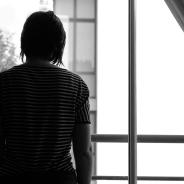SYDNEY — The encounter began like so many others between a white policeman and an Aboriginal teenager.
At an inner-city housing estate in Sydney on Monday, a hostile conversation escalated to a verbal threat against the officer — "I'll crack you across the jaw, bro" — followed by a violent response that indigenous Australians say happens far too frequently to be anything other than racism.
The white officer strode toward the skinny 16-year-old, ordered him to face away and kicked his legs out from under him. The teenager collapsed face-first onto paving stones and let out a moan that belied his previous display of bravado.
Like the killing of George Floyd in Minnesota, the encounter was captured on a cellphone, and it enraged an Aboriginal community that is even more economically and socially disadvantaged than African Americans. Indigenous Australians make up 2 percent of the population and 27 percent of the prison population. They earn 33 percent less than other Australians and die 8.6 years earlier if they are male and 7.8 years earlier if they are female, official statistics show.
But unlike the unrest across the United States this week, a protest march by some 3,000 people through downtown Sydney on Tuesday was not broken up by police and proceeded peacefully.
Unlike many American authorities, senior Australian police officers, politicians and prosecutors are showing a willingness to act against officers who use excessive force.
The more progressive approach began more than two decades ago. In 1997, to reduce the high number of young black people in custody, New South Wales state introduced a law stipulating that arrest should be used against juveniles only as a last resort, according to Samantha Lee, a lawyer in the police accountability practice at the Redfern Legal Service in Sydney, which represents many Aboriginal clients.
"It's the law, and police are meant to follow it," she said in an interview.
Read the full article here (The Washington Post, 6 June 2020)


